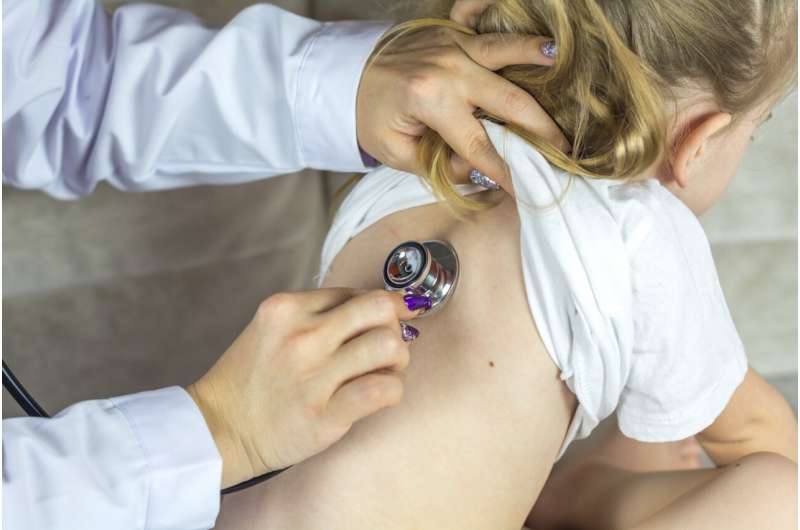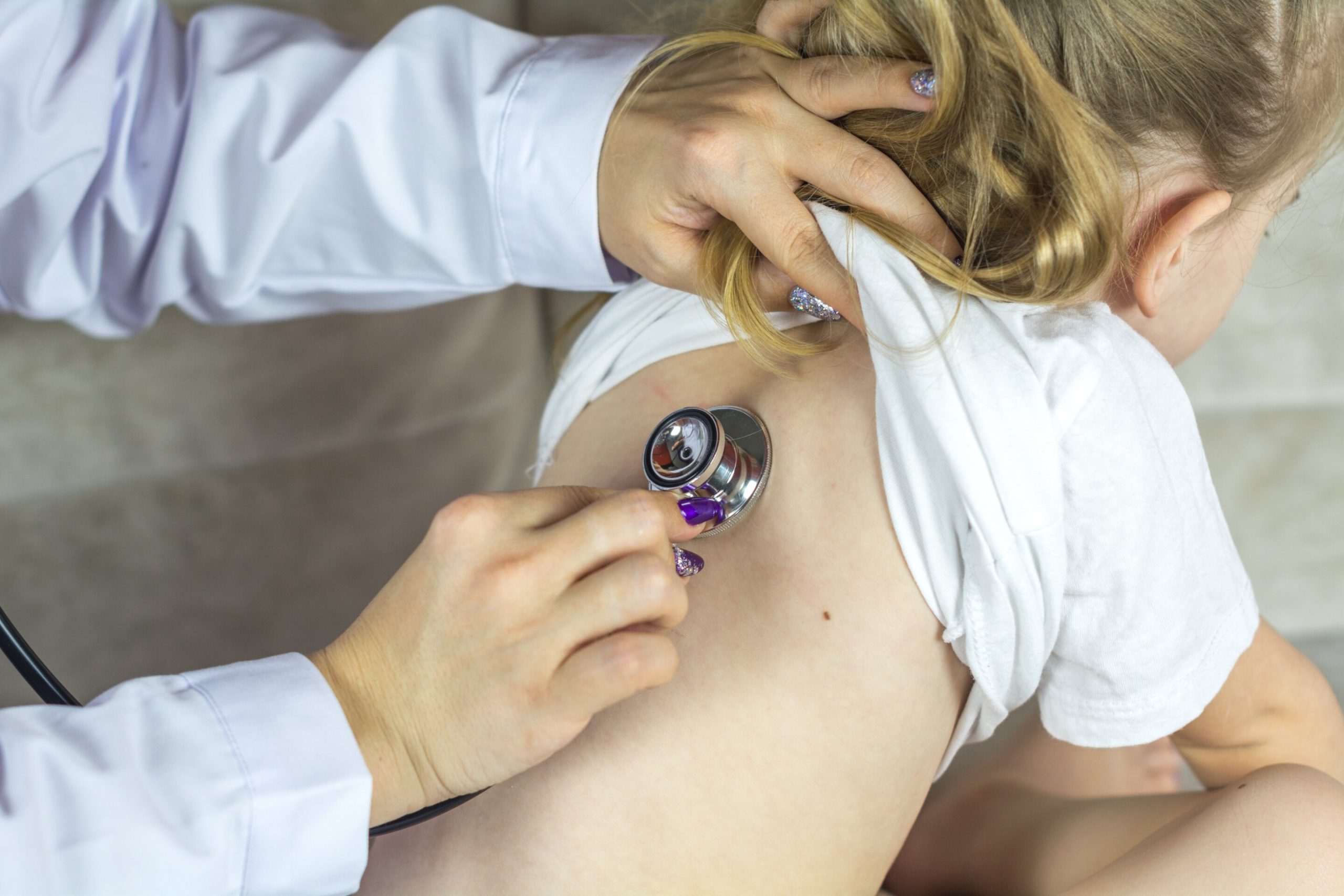
Most U.S. hospital emergency departments—lacking staffing, training and equipment—are not fully prepared to care for children. Maximizing their readiness to handle pediatric emergencies would be a cost-effective way to save children’s lives, according to a new Stanford Medicine-led study.
The study, which will publish Oct. 7 in Health Affairs, is based on data from hundreds of hospitals in 11 states. About 80% of emergency departments are not highly prepared to treat children, they found. The research team studied whether it would be cost-effective to upgrade these less-prepared emergency departments to make them more ready to treat babies, children and teens.
Doing so would cut deaths of pediatric emergency patients by almost half, and the cost would be reasonable by industry standards, they found.
“Delivering appropriate, timely care to kids with injuries or acute illnesses can make the difference between complete recovery and many years of disability or childhood death,” said the study’s senior author, Jeremy Goldhaber-Fiebert, Ph.D., professor of health policy. “We found that the cost of being ready was well below the threshold that people think of as ‘value for money’ in health care.”
“This finding is actionable and could have broad impact,” Goldhaber-Fiebert added, noting that across the country, there are about 30 million pediatric emergency department visits per year.
The study’s lead author is Christopher Weyant, Ph.D., who was a postdoctoral scholar in primary care and outcomes research at Stanford Medicine when the study was conducted.
Transforming an emergency department to a high state of readiness for pediatric care requires obtaining child-sized versions of lifesaving medical equipment such as pediatric ventilators, but more importantly, it means having designated leaders who keep everyone ready to care for children.
These pediatric experts ensure doctors and nurses stay up to date on emergency protocols specific to infants, children and teens, and are ready to work as a seamless team when a child’s acute condition requires a fast, tightly coordinated lifesaving response.
Gauging pediatric readiness
The study used data from 747 emergency departments in 11 states: Arizona, California, Florida, Iowa, Maryland, Minnesota, New Jersey, New York, North Carolina, Rhode Island and Wisconsin. The mix of departments included was representative of emergency departments across the entire country on measures such as size, and whether they were rural or urban, public or private.
The researchers scored the emergency departments’ level of pediatric readiness on a scale of 0 to 100. Those with a score of at least 88 were considered highly ready to care for children; prior research showed that emergency departments at this level of readiness have better short- and long-term survival rates for pediatric patients.
The researchers then focused on emergency departments with readiness scores below 88, comprising about 80% of the departments in the original sample.
Using data from 7.9 million pediatric patients who received care for traumatic injuries or acute medical emergencies in these less-prepared units, the team built a model to predict how patients’ outcomes would differ if they had been cared for at a highly prepared emergency department—including how many quality-adjusted life years they would have gained. The model also projected how much the improved preparedness would cost.
The model analyzed outcomes for different groups of patients—children of different ages, who had different reasons for needing care—as well as for various sizes and types of hospitals. It predicted patients’ likelihood of dying in the emergency department or after hospital admission from the ED, and their risk of having died one year after seeking emergency care.
The researchers estimated projected costs for improving pediatric preparedness based on the number and mix of pediatric patients that hospitals saw per year, their current level of readiness and hospital type.
Cost-effective improvements
Better pediatric preparedness would cut deaths among young patients seeking emergency care by 42%, the study found. Such deaths are fairly rare even among the less-prepared hospitals, occurring now at a rate of 78.03 per 100,000 children, according to the paper.
The benefit arose from fewer predicted deaths in the immediate period after seeking care, not from reductions in deaths a year later, the study found. For the 7.9 million young patients in the study data set, the improved preparedness would have translated into a gain of 76,800 years of life expectancy and a gain of 69,100 quality-adjusted life years.
Increasing the readiness of emergency departments would cost $9,300 per quality-adjusted life year gained, the study found, and the cost per life saved would be $244,000. In general, changes that cost less than $50,000 per quality-adjusted life year gained are considered highly cost effective, so this investment would fall well below the threshold.
The researchers analyzed the cost effectiveness for different types and sizes of hospitals and found that upgrading emergency departments cost less than $20,000 per quality-adjusted life year gained in all hospital types.
“Thankfully, most of the time, kids bounce back from illness and injury,” Goldhaber-Fiebert said. “But our work shows that readying the emergency department specifically for children can really make a difference in terms of whether certain young patients leave their emergency department alive—and this does not cost that much money.
“Interventions that can move the needle on pediatric deaths are rare, and when they are both effective and not costly, it makes sense to use them,” he added. “This has the potential to have benefits at a massive scale.”
The study was co-authored by researchers from Oregon Health & Science University; the University of California, Davis; Los Angeles County; the University of Texas at Austin; the University of Utah; Children’s National Hospital; and Icahn School of Medicine at Mount Sinai.
More information:
Health Affairs (2024).
Citation:
Better-prepared emergency departments could save kids’ lives cost-effectively, study finds (2024, October 7)
retrieved 7 October 2024
from https://medicalxpress.com/news/2024-10-emergency-departments-kids-effectively.html
This document is subject to copyright. Apart from any fair dealing for the purpose of private study or research, no
part may be reproduced without the written permission. The content is provided for information purposes only.


